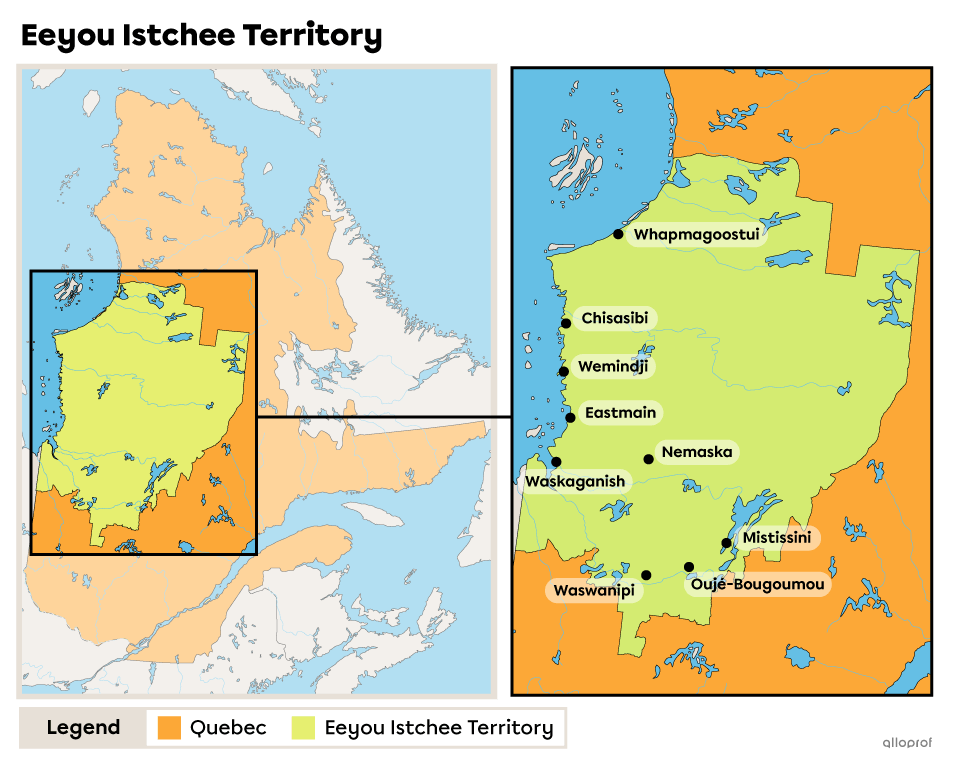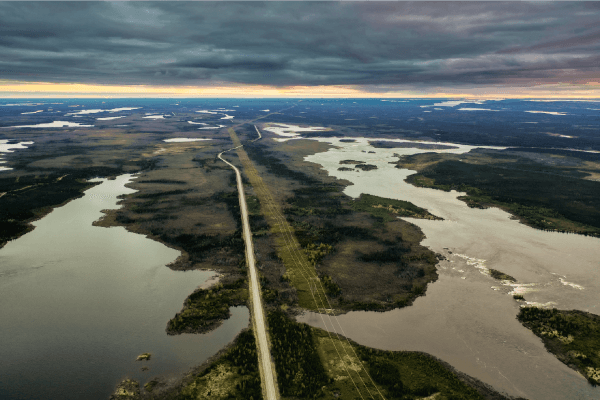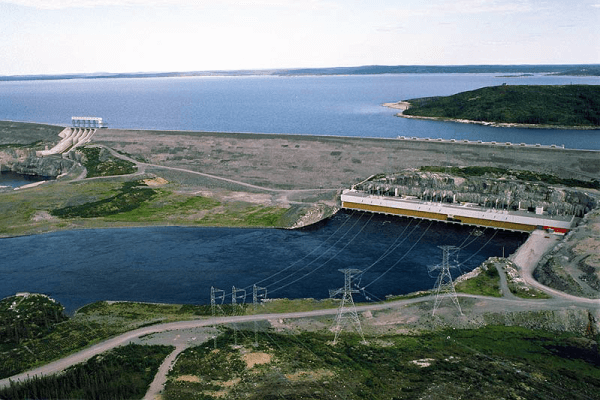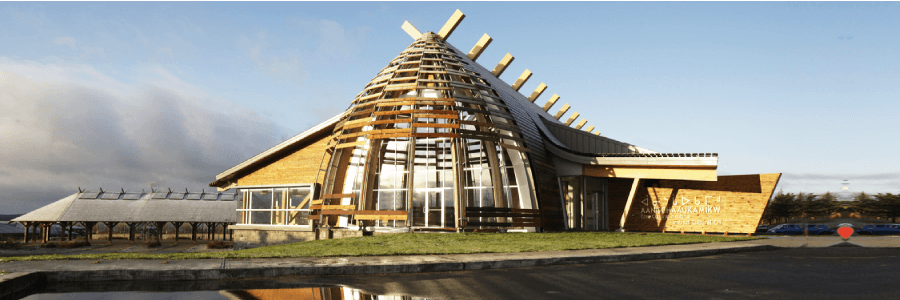To access the other concept sheets in the Indigenous Territory unit, check out the See Also section.
The Cree are an Indigenous people originally from the prairies of Western Canada. They have lived in the James Bay region for about 5000 years. Today, the Cree represent the largest Indigenous population, both in Canada and Quebec. There are approximately 317 000 Cree in Canada[1] and 21 000 Cree in Quebec[2].
The Cree are traditionally a nomadic Indigenous people living very close to nature who hunt, fish and trap, travelling over a large territory to find the resources required to meet their needs.
In the 1600s, the James Bay Cree started trading with Europeans. They traded furs for goods and tools (pots, mirrors, firearms, etc.), which changed their traditions and way of life.
In 1670, the James Bay Company took control of the James Bay territory without consulting the Cree. Two hundred years later, in 1870, it was Canada who took control of Cree territory.
In 1876, the Canadian government adopted the Indian Act. This required Indigenous people to settle on reserves, with the goal of assimilating them. Their way of life was profoundly changed, which significantly limited their rights and autonomy. The Cree went from a nomadic way of life on large territories to a sedentary way of life on a small territory.
While the Cree were forced to become sedentary, they still practise traditional activities today, such as hunting. They have also developed new economic activities, such as forestry, infrastructure construction, tourism and air transportation.
The members of the Cree Nation speak Cree dialects and use English or French as a second language.
-
A nomad is a person who regularly travels from place to place to meet their food needs.
-
Sedentary refers to a person or group of people who are permanently settled on their territory.
-
A reserve is a territory that belongs to the Canadian government, but its use is reserved for First Nations members.
The political organization of the Cree in Quebec has changed over the years according to the community’s needs. The Grand Council of the Crees was established in 1974 with the goal of negotiating with the Quebec government regarding the James Bay hydroelectric project.
Today, the Cree Nation Government works alongside the Grand Council of the Crees (Eeyou Istchee). They have the same members, the same structure and the same board of directors. The Grand Council of the Crees plays a political role, while the Cree Nation Government takes care of administrative matters.
The traditional territory of the Cree is called Eeyou Istchee. It is located in part of Quebec and Ontario. Nine Cree nations live in the Quebec portion. Their territory is located in a region with a continental climate, which means there are large temperature variations between summer and winter.

The ancestral territory of the Cree occupies an area of more than 400 000 km2[3]. By comparison, the area of Germany is 357 386 km2[4]. With the 1975 James Bay and Northern Quebec Agreement, the governments of Quebec and Canada recognized a large portion of this traditional territory. It is located in the current administrative region of Nord-du-Québec.
Source: Cree Nation Government, 2019[5].
Under the James Bay and Northern Quebec Agreement, Cree territory was divided into categories. The activities authorized on a given portion of land depend on its category.
The Agreement identifies three types of lands. Category 1 lands are reserved for Cree use. On Category 2 lands, only the Crees can hunt, fish and trap. Category 3 lands are open to all for hunting and fishing, but certain species can only be harvested by the Crees.
For example, if a non-Indigenous person wants to go hunting or fishing on lands in certain categories, they must ask permission from the community’s Band Council.
The Cree territory of Quebec is vast and far away from the province’s populated centres, Quebec City and Montreal. This territory has abundant natural resources, and there has been a lot of development over the years to exploit them. The construction of hydroelectric stations, dams, sawmills and mines has gone hand in hand with the building of roads and airports to transport goods and workers.
Here are the main roads used for transportation.
-
The Trans-Taiga Road crosses the Cree territory from west to east over a distance of 666 km. This gravel road provides access to the Grande Rivière hydroelectric power stations.
-
The Billy Diamond Highway (formerly the James Bay Road) crosses the Cree territory from north to south over a distance of 620 km. It is paved.
-
The North Road connects the city of Chibougamau to the Billy Diamond Highway (in the northeast). This gravel road stretches over a distance of 406 km.

Long stretches of this road are isolated.
Source: Posnov, Getty Images
In addition to these main roads, people who work or live in Cree territory can travel by plane, including flights run by Air Creebec. This company serves several Cree villages, Abitibi, northern Ontario and Montreal. It is owned by the Cree Nation of Quebec, and one-third of its employees are Indigenous.

Source: C-FCSK Dash DH. 8 Air Creebec [Photograph], David, 2010, Flickr, (URL). Rights reserved*[6]
Cree territory is rich in many natural resources, such as mineral resources, including gold, copper, lithium and diamonds. Over time, many mines have developed and many are in the process of exploiting these resources. Each mine requires planning and organization such as roads and electrical infrastructure.
Forests are another natural resource on Cree territory, and the forestry industry has been exploiting it for decades, requiring its own planning and development, such as logging roads and sawmills.
Hydroelectricity is produced on some of the rivers in Cree territory.
The Grande Rivière crosses the community’s traditional territory. In the 1970s and 1980s, major projects were undertaken to produce electricity using the hydroelectric power stations built on this river. Later, another station was established on the Rivière Eastmain. The construction of these power stations and the required planning and development have left their mark on the territory. In addition to roads, dams were built to create large water reservoirs used to operate these stations. This flooded part of the Cree territory, and changed the course of certain rivers.

Hydroelectric installations at the La-Grande-3 Station on the Grande Rivière.
Source: Hydroelectric Installation La Grande-3 [Photograph], Hydro-Québec, (n.d.), (URL). Rights reserved*[7]
The nine Cree villages are dispersed across the territory. With the financial compensation received under various agreements, the Cree communities were able to improve the infrastructure in villages, such as installing water systems to supply drinking water or sewer systems to manage wastewater, and building schools or community centres. Despite their remoteness, these communities now have access to certain services and means of transportation.
The village of Oujé-Bougoumou is located on the shores of Lac Opémisca. This is the end result of a long process for the community to settle after no fewer than seven forced relocations. Inaugurated in 1993, the village was designed and built to respect the Cree vision and way of life.
Among other things, a housing program was developed and is managed by the community itself. This has allowed the community to respond to the needs of its members with more autonomy, without having to wait on government programs. The type of housing is also planned to minimize environmental impacts and to facilitate management of the water supply and sewer systems. The village uses an innovative source of energy for heating and for hot water supply for residents. It recovers the wood dust produced by the sawmills in the area to produce enough energy for the entire village.

Source: Cree Cultural Institute in Oujé-Bougoumou [Photograph], Oujé-Bougoumou, (n.d.), Oujé-Bougoumou Cree Nation, (URL). Rights reserved*[8]
Pour en apprendre plus sur ce village, consulte l’article Visite à Oujé-Bougoumou.

The above map only shows the three main roads in the Eeyou Istchee road network.
In the 1970s, the Quebec government planned a hydroelectric project on the Grande Rivière, on Cree territory. The project was started without consulting the Cree, Inuit and Naskapi living on the land. As a result, these communities contested the project with support from many groups, including international organizations like the United Nations.
The governments of Canada and Quebec were then forced to enter into negotiations with these Indigenous nations. The Quebec Superior Court ordered the work on Cree territory stopped in 1973.
The negotiations between the Indigenous communities and governments led to an agreement signed on November 11, 1975. The agreement granted the Cree, among other things:
-
certain political rights to provide greater autonomy
-
financial compensation for parts of the territory lost or modified
Following the signing of the James Bay and Northern Quebec Agreement, disagreements remained between the Cree and the Quebec government on how it was implemented. The Cree felt that many interventions on their territory, such as hydroelectric projects and excessive logging, had damaged their ancestral lands and hindered their traditional practices.
The Cree and the Quebec government met to discuss a new agreement aiming to ensure, among other things, sustainable development of Cree territory. The Paix des Braves provided the Cree with financial compensation, helping them develop their communities. This agreement also led to the creation of the Cree Nation Government in 2014, giving the Cree greater political autonomy.
Other agreements were signed between the Cree and different levels of government. These agreements mostly address Cree autonomy on their territory, and include the following:
-
the 2008 agreement for a new federal relationship
-
the 2012 agreement on governance in the James Bay territory of Eeyou Istchee between the Cree of Eeyou Istchee and the Quebec government
-
the 2017 agreement on the governance of the Cree Nation between the Cree of Eeyou Istchee and the Government of Canada
In 2010, the Eeyou Marine Region Land Claims Agreement resolved a number of questions, including the ownership and management of the islands in James Bay. This agreement guaranteed Cree ownership of the islands and their underground resources.
In 2016, 49% of the Cree population of the Eeyou Istchee territory was under 24 years of age[9]. Given the remote geographic location, there are not many jobs on Cree territory. One of the issues for the Cree is to ensure that these young people, and the general population, have jobs on their territory. To ensure this, various communities have signed agreements with mining and forestry companies. However, mining and forestry activities can threaten the territory’s sustainable development.
The Osisko mining company signed an agreement with the Miyuukaa Corp. Cree company to build and operate a power line that would supply the Windfall mine. The project will create both temporary and permanent jobs for Crees.
There are many different natural resources on Cree territory of interest to various companies. The exploitation of these resources by outside companies means that the needs and wellbeing of Indigenous communities are not always taken into consideration, leading to the destruction of natural environments. The ecological damage in turn prevents the Cree from practising their ancestral activities.
However, the exploitation of natural resources by the Cree can be an important element in the economy of the Cree of Eeyou Istchee. Agreements with governments and various companies can lead to greater Cree autonomy in managing their territory.
Cree autonomy in managing and exploiting natural resources enables communities to ensure that exploitation is done in accordance with the community’s values, including the protection of natural environments.
Managing the exploitation of resources is complex because Cree communities must find a compromise between the interventions and activities of outside companies and the protection of their territory, while striving for sustainability.
To access the rest of the unit, you can consult the following concept sheets.
- Gouvernement du Québec. (2023, 23 février). Cris (Eeyou). https://www.quebec.ca/gouvernement/portrait-quebec/premieres-nations-inuits/profil-des-nations/cris
- Bergevin, R., Charette, J. et Méthé, M. (2014). GÉO à la carte - Territoire autochtone - 1er cycle du secondaire. [Cahier d’activités]. CEC
- Cree Nation Government. (s.d.). Les Eeyou d’Eeyou Istchee. https://www.cngov.ca/fr/communaute-et-culture/communautes/
- Atlasocio. (2022, 20 décembre). Classement des États du monde par superficie. https://atlasocio.com/classements/geographie/superficie/classement-etats-par-superficie-monde.php
- Cree Nation Government. (2019, 21 novembre). Eeyou Istchee. ArcGIS Online. https://alloprof.maps.arcgis.com/home/item.html?id=19e5f53cc6834193aac6bba5d03455d1
- David. (2010). C-FCSK Dash DH. 8 Air Creebec [Photographie]. Flickr. (URL).*
- Hydro-Québec, (s.d.). Centrale hydroélectrique La Grande-3 [Photographie]. (URL).*
- Oujé-Bougoumou. (s.d.). Institut culturel cri à Oujé-Bougoumou [Photographie]. Oujé-Bougoumou Cree Nation. (URL). *
- Lévesque, C., Radu, I. et Tran, N. (2018). Revue de littérature SANTÉ Thème : état de santé de la population autochtone au Québec. Gouvernement du Québec. https://www.cerp.gouv.qc.ca/fileadmin/Fichiers_clients/Documents_deposes_a_la_Commission/PD-7.pdf
*Extrait employé par Alloprof conformément à la Loi sur le droit d’auteur dans le cadre d’une utilisation équitable aux fins d’éducation [https://laws-lois.justice.gc.ca/fra/lois/c-42/page-9.html].